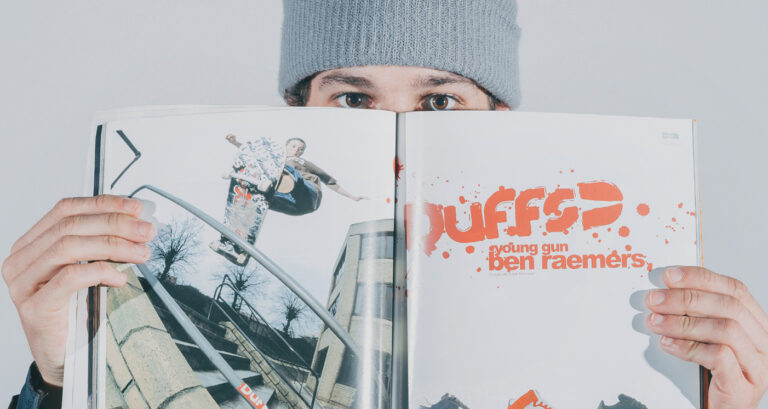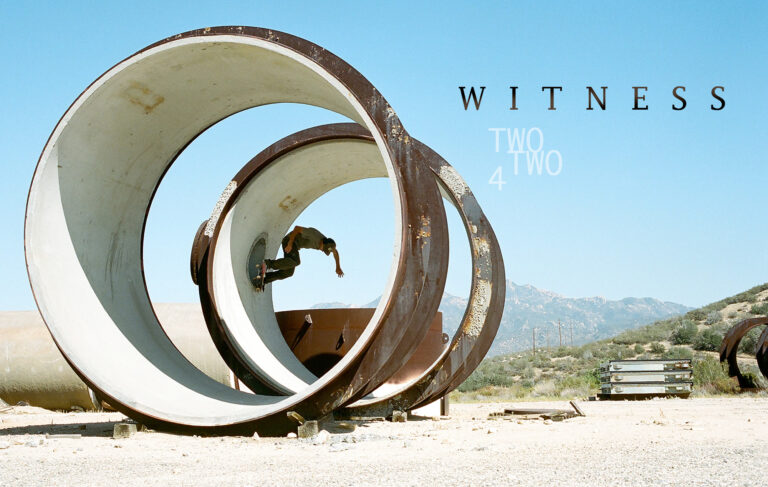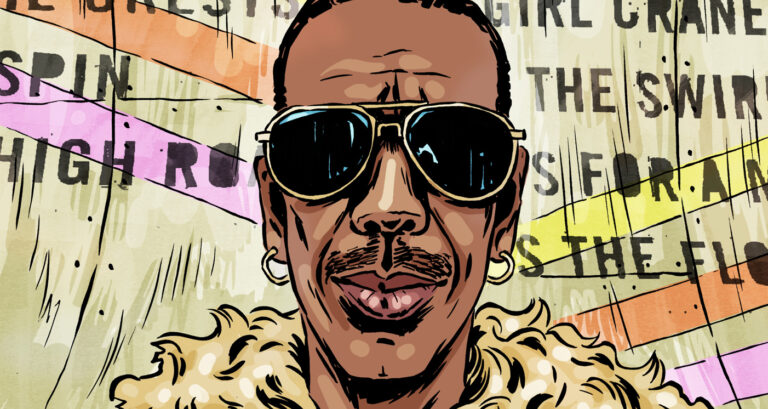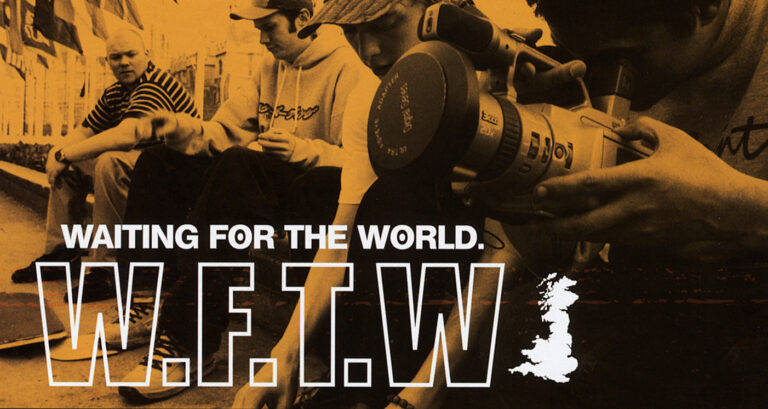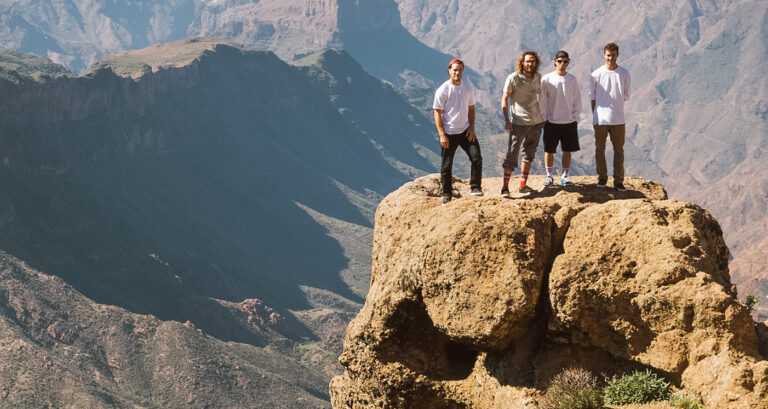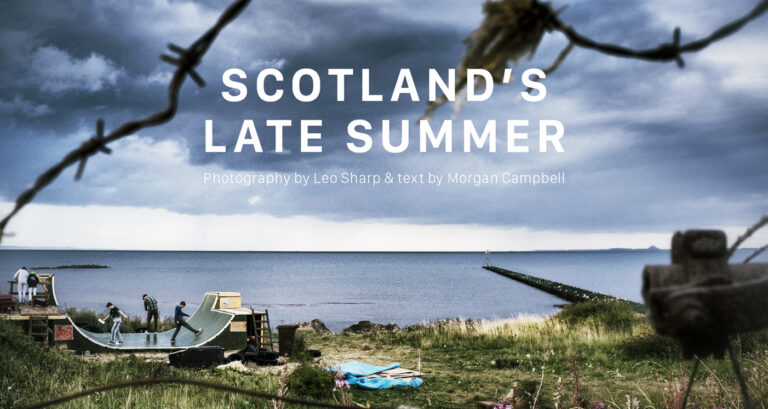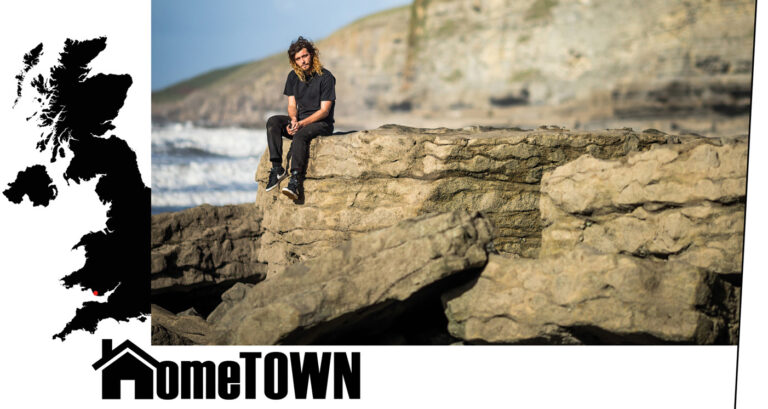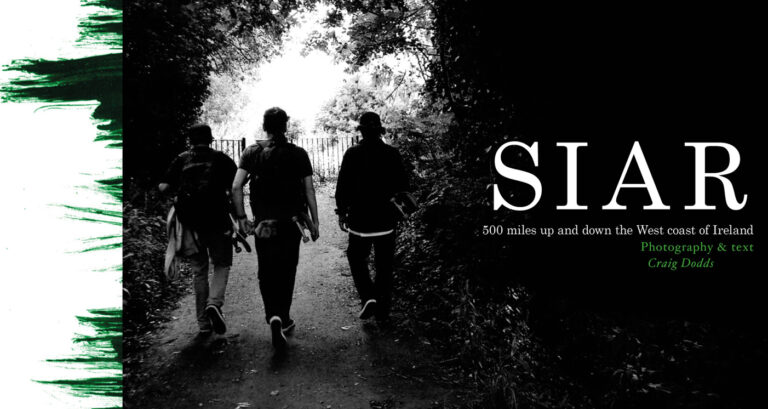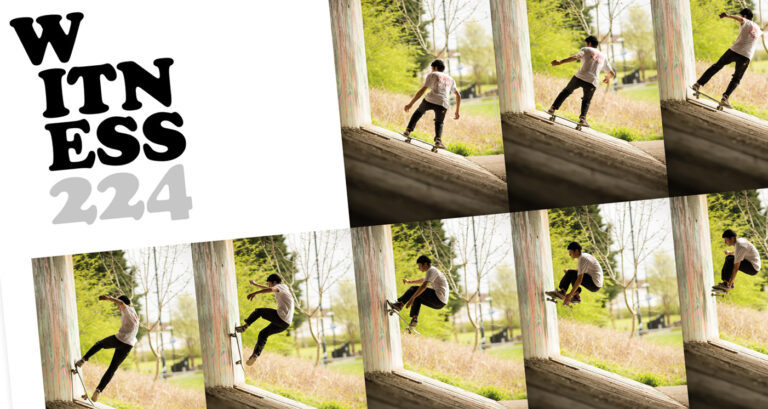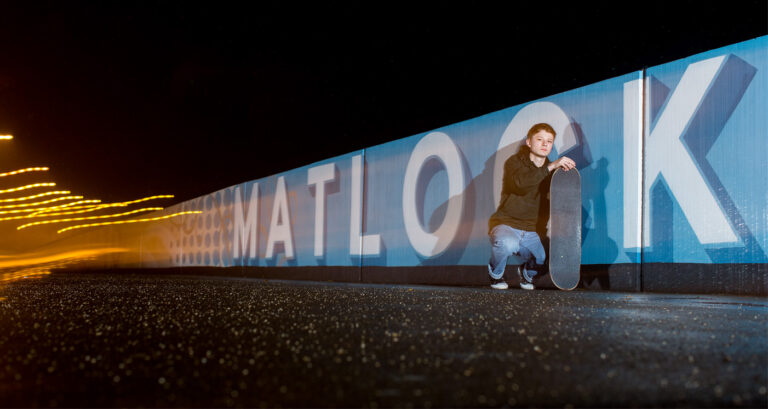Not long before we all had the Internet in our pockets, physical skateboard media just seemed like such a bigger deal. You’d actually have to wait a month for the new issue of a magazine, and decent VHS videos only came around about once every six months – and neither were particularly easy to find. There was more to it than just refreshing your Instagram feed to see what was happening in this world of ours. These were products – artefacts, even – that were consumed with a fervour that far belied their (by today’s standards) cumbersome impracticality, pored over endlessly, burning themselves into the minds of those that consumed them at the time, with the best ones being elevated to legendary status by the archivists and the eager eyes of the next generation, keen to see who and what brought us to where we are today.
Despite the lack of premiere-tours and teaser clips, VHS videos felt so much more precious, and their releases so much more of an event, than today’s digital offerings. They took a long time to make (no chance of getting one guy’s section out online while the injured/lazy dudes catch up), and the pre-mobile, pre-GPS climate made it so much harder work. Cameras cost a fortune, batteries would die, and energy drink companies weren’t filling the tank of your clapped-out car for you.
With Californian industry eyes starting to peer over the Atlantic into our scene more than ever as the millennium approached, (with magazine Euro-tours becoming the norm, and Tom Penny, Carl Shipman, Geoff Rowley, Brian Sumner et al cropping up more and more often in the mighty 411VM) British skateboarding seemed increasingly more comfortable in forging its own identity, creating its own industry and feeling a lot more at home in the cold, dark, wet, pigeon-shit caked streets of Great Britain. The videos that were produced around this time offer, as a result, some of the raddest and most inspiring selections of individual sections ever – and we’re going to revisit some of the finest.
One of the pivotal UK videos of the pre-digital era was Blueprint’s Waiting For The World, the British company’s 2000 video, and their third full-length (if you count the pre-Blueprint Panic video, with its Blueprint section, which you definitely should). Sections from Paul Shier, Colin Kennedy, Carl Shipman, Mark Baines, Scott Palmer, Nick Jensen, Channon King and Paul Carter blew minds, and re-contextualised what a British skateboard video could be – and what it could achieve. One of the most rewound parts of WFTW was John Rattray’s closing section, so it seemed that it was only appropriate that we got John, Dan Magee, (who made the video) and Colin Kennedy, (who, as well as having his own section on WFTW, was also around for the filming of most of John’s section) together to find out the story behind that part for the first in this series of articles.
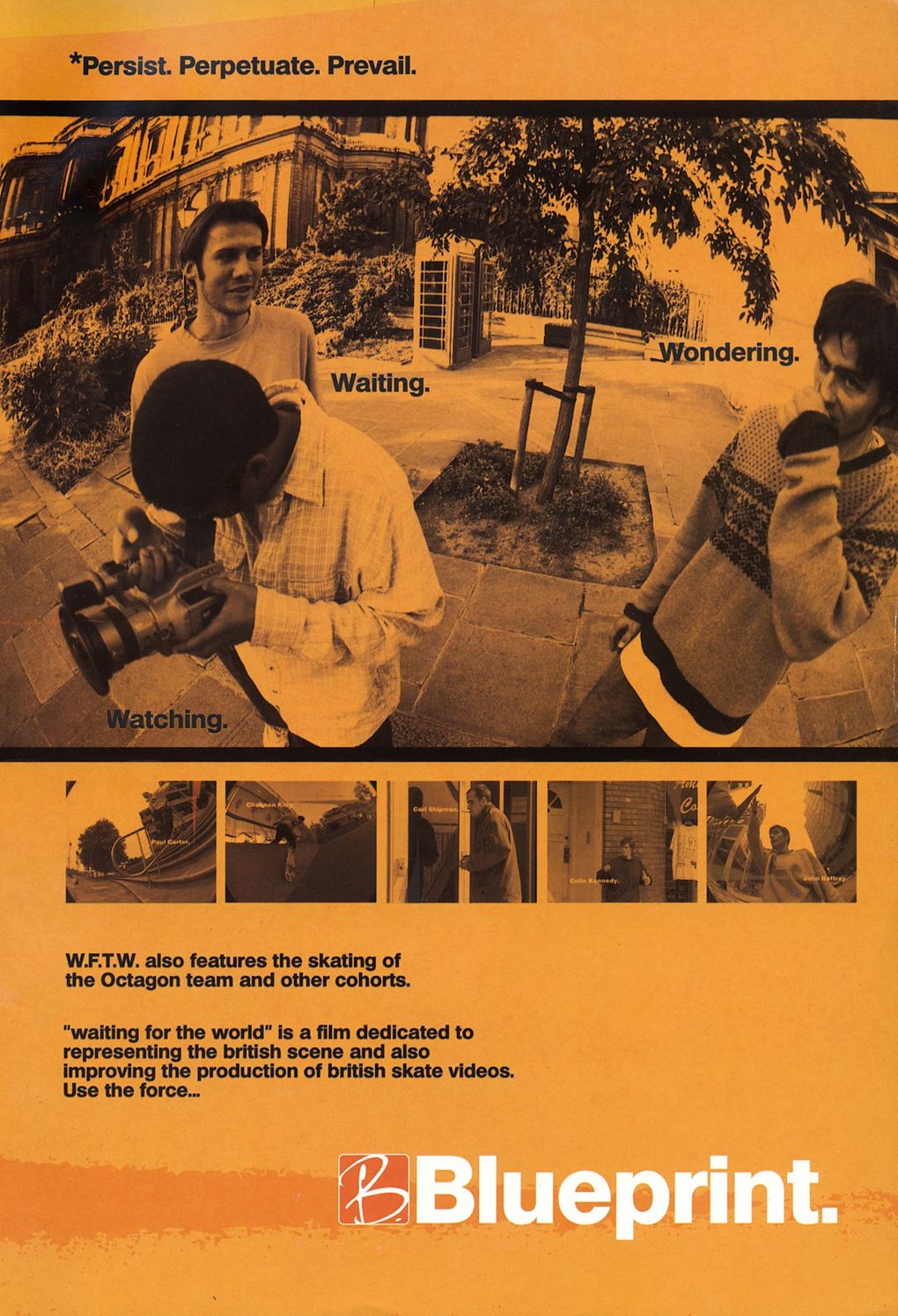
How much pressure did you guys feel when you were making this video? Blueprint was getting more coverage in the US, 2000 was a year of a lot of change in skateboarding, and with the éS video, Photosynthesis and Cliché’s Europa video there were VHS-bombs exploding everywhere. At the time, I think people knew that this was going to be the ‘big’ Blueprint video, the one that was going to make a mark in the US – so how much did the potential audience affect filming, spot selection and so on?
Dan Magee: There was no real pressure at all, we were young and no one needed much to get by. We drove around in a clapped-out estate car and everyone came and slept on greasy sofas at the skate house we had. At the time things just naturally took their own course; spots were plentiful and un-rinsed. It was a pre-internet, pre-9/11, pre-CCTV world. London had no congestion charge and there was a loophole in the tube system that allowed unlimited use of travel cards from every alternate year previous…if you had the foresight to have kept them. The one thing I do remember is that I don’t think anyone expected WFTW to be as it was. Blueprint still had a bit of a ‘Panic’ stigma about it… This was our chance to make Blueprint stand on its own. I even remember being quite shocked at the response during the premiere in Sheffield. I recall that there was a UK DC tour coming through and the same guys that owned the distribution that focused on DC – and all the USA board brands – looked heavily bummed at the impact the premiere made. It seems they might have been right, as the video was the heralding of legit UK companies.
John Rattray: I don’t recall feeling pressure around the outcome of WFTW. There wasn’t much time to think about that stuff, potential audience and whatnot. Filming choices and spot selection was based more on Dan’s attention to developing his craft and above all having a really tight budget. Dan can speak more to the budget constraints but my memory of the process is more like: wake up on the couch at Cawdor Crescent, drink tea and then jump on the Piccadilly line if we had a fiver for a day pass, and see where the day took us. There was a great era when we had a team car that was Burlo’s old Renault Savannah. I think it was Renault anyway. Thing would constantly overheat. Anyway, the potential audience was not in our thoughts, or not in mine at least. I was concerned with having a haematoma drained at Ealing General, hoping Dan didn’t get robbed at Ladbroke Grove a third time, getting more than a kickflip down the Waverley Station roof gap – stuff like that. And of course: passing Linear Algebra exams and handing in coursework on time.
Colin Kennedy: Dan was driving his vision of a premium video that was going to really represent British skateboarding in the most credible way. However he knew the only shit that would stick to the global wall would have to be the pinnacle of what we could physically do and what he could produce. John’s ability was boundless and Dan knew he could tease a global level part out of him, and John might disagree, but I think you can see an evolution through the part in his style and even the way he dressed as time went on. Internally we were just working on a video but to be honest I am not sure to what extent people were anticipating it.
Almost every significant Scottish spot makes an appearance. Was that intentional, (because it seems like something John would want to do) or did it just come about through lots of travelling?
JR: Glasgow looks good on film. I think Dan was conscious he didn’t want it to be too London-centric. He definitely wanted to showcase the best of British at the time, and we all did too, of course. So it probably comes down to Dan’s good management of the project combined with a great collective effort to make it work. Although that said, there was definitely a lot of bitching that went on. It definitely wasn’t all, “Ra-ra, let’s make the Blueprint video” every day. But despite hurdles, we worked well as a team and formed lasting friendships through the process, so I think that’s the greatest result out of the whole thing. But yeah, Scottish spots, fairly intentional to de-London-ise the feel of the video. Dan?
DM: Glasgow, Edinburgh and much of Scotland were amongst my favourite places to shoot in the UK. I hadn’t visited much of the North East yet and it was only later that I became brave enough to visit and film in Liverpool. When I did, all these cities and towns joined Scotland as locations I think look great for skating and have an ‘old New York’ type vibe. Sheffield used to be great too. I also love the characters, skate community and little social quirks all those areas have. I miss seeing all those cities being represented that way under one production. It seems I read and hear so much about representing London and making videos based around London and how rugged the spots are. London has had its shine for decades. We’ve seen how London can be skated for years and years. I used to enjoy seeing how London sits and looks amongst other British cities as part of a bigger puzzle. Another important factor was that Blueprint was built around the personalities of the team and a big part of where you come from in the UK makes up how you skate. That’s why it was important to me to mix it up and take everyone to a variety of cities. It’s also why we used to do those tours that spanned the whole of the UK.
CK: John always had very much a planned approach to the way he would select spots and tricks, whether it be the history of the spot or whether it was aesthetically appropriate for a photo. Dan was pretty adamant about giving visibility to where we were from; where we skated and specific tricks that we might have filmed with friends before, which had not been seen by a wider audience. A good example would be John’s back smith and flip 5050, which Benjie Bateman filmed originally for his 4th Quarter videos.
How much of the footage was filmed for WFTW? Is every trick in there something you went out to film knowingly for this video, or did the video start to materialise as the footage piled up?
JR: I’ll go ahead and say that everything in my part, bar the ollie down the gap in Vancouver, was filmed specifically for WFTW. Mainly by Dan. I’m trying to think if Massey or Ches or Mondon filmed stuff. Dan would remember better than me because he logged all the clips. Alex Craig filmed the Vancouver gap ollie. And now that I think about it, I think Dan actually gave me that little camera to take on the trip and maybe get something for the video with. Do you remember that, Dan?
DM: WFTW was made in about a year or so. We did go out specifically to film for it as a ‘Blueprint video’, but things were not as planned as Lost and Found a few years later. I think Vaughan’s part in First Broadcast was the first section in any video I’ve made, where we went out specifically to get certain things or make a part that would essentially be a breakthrough part for that skater. Before that with WFTW and most of FB, we did things more organically. Lost and Found’s specific focus was to showcase every skater. That’s why I was strict about everyone putting in maximum effort for their LAF parts. That said, I can remember wanting John to have a really strong part, as he was the most versatile member of the team. We begrudgingly gave him a ghetto cam for his trip to Canada, as it was better to try and get something than nothing. It’s a good thing he quit after First Broadcast because there was no way I would run ghetto cam by Lost and Found!
John, how much time were you spending in London during the filming? Were you up and down a lot, or staying there? Were you spending all your time together, either you two guys or as a team?
JR: At that time, like ’98, ’99, I feel like I was down there a lot staying on the couch at Cawdor latterly, or at Dan’s Brentford flat earlier in the process. Dan’s Brentford flat, near that one black ten-stair rail, is where we had the meeting that re-structured the whole Panic/Blueprint/team/marketing strategy. The bathroom had a heated floor. Very nice. Dan was still pretty heavily influenced by Illuminati/Masonic architect conspiracy ideas at this point and it’s where we put together that Blueprint Build and Destroy promo short because Dan had come to the stark realisation that everything needed to be filmed on VX and if it was wide it had to be death lens, so we dumped what we had into that promo and started fresh on what would become WFTW. He can correct me if I’m mis-remembering any of this stuff. Dan will be better at that because he was the one stressing on timelines and deadlines.
DM: There was Blueprint BA and Blueprint PA. Before-Alvin and Post-Alvin. Alvin was the original TM from Faze 7 who conceived Panic. There was quite a lot of stigma initially towards Blueprint as a brand in its own right on account of it being associated with Panic and even Faze 7. The restructuring meeting was one of the last things Alvin had a hand in; it sucked that a couple of riders were lost in the mix, but ultimately it was the first step in defining what many people remember as Blueprint. Anyhow, the point is that as soon as Alvin left to do other things, I had complete control of how Blueprint continued and skate shops started to vibe with it a bit more as Mark Harman took over sales. This also coincided with the look and feel of Blueprint becoming a bit more cohesive and it started to have its own identity rather than just being a Zoo York/Silverstar inspired company. As I say, things were organic for the time in terms of filming and spots. Not many people explored the city except for Channon (King), (Mark) Channer and Mike Manzoori. We could go to spots and be the first people to film clips on them. Colin Kennedy and I went to skate what’s now known as Chalky Ledges. I remember waxing them from fresh. Colin went on to lay down a lot of tricks on those things… I’d say he owns it with the switch back nosegrind revert in early 2001. A lot of WFTW dudes were killing it back then without really even knowing it… Scott Palmer, switch back heel over the rougher, harder-to-skate Westminster road gap in 1998… When we skated in London, we’d generally start at Shell as it’s right opposite Waterloo and the train would go from Brentford to Waterloo Station. Then later on when we had a house in Boston Manor, we would got to St. James’s Park – which is Victoria Benches – and get our skate on from there. Parliament Square was bust-free then, even Trafalgar. I think the older London spots are so much more epic. Victoria Benches, both bits of Shell Centre, Paternoster… The whole of St. Paul’s was a ghost town at the weekend, so you could skate Knightrider etc. It was so sick back then.
Were you skating at Shell a lot, or just when you were filming?
JR: Really at that point if we were skating then we were filming. We’d hit Shell Centre a fair bit as an easy option when other spots weren’t working out and we just wanted to try to actually get something done with the day. At least that’s how I remember it.
Dan, did you have days filming one person, and days filming another, or was it weeks at a time? How much were you all going out filming together? You guys really seemed like friends first, team second.
DM: No, we’d always get people down together or do trips in groups. That’s always been my thing. What’s the point in having a skateboard company if it’s not gonna be a team? There’s a couple of guys that didn’t really fit the team vibe of Blueprint after WFTW and that’s why it didn’t work out. I would want people to ride for Blueprint to be part of a team and friends and not really just to ride for it because it was the most popular board company at the time or as a stepping-stone to something else.
How long did it take, from getting the first trick to the deadline?
JR: Good question for Dan. I’m guessing around two years. We started when Dan lived in Brentford, I’m fairly sure of that.
DM: I think it was like 12 to 18 months tops, if that. Sometime in 1999 to mid-2000, I’m pretty sure. The Build and Destroy promo was filmed around 1998.
Is the pool table in your part in homage to Matt Hensley, John?
JR: That’s a nice thought. Let’s say yes, but really that was just filmed by Alex (Craig) in, I think Ashland, Oregon, where I spent a few days with some Scots on the infamous Vandura road trip of 1999. Andy Dobson, who now runs Folk Custom Skateboards, and I were playing pool a lot on that trip.
Whose choice was the music? Everybody loves the “…on the phone to you” bit, but I was quite surprised to hear that song in a skate video.
JR: Dan would know that one. I backed the track because it worked. I quite like it but it’s definitely on the more pop end of the indie spectrum. It’s weird, that “on the phone to you” bit was a fun accident that was good in the edit but I’ve always thought that line is pretty weak. Fun fact, it is right outside the Crucible in Sheffield, where they have the World Snooker Championships.
DM: I choose all the music for the videos, because the stuff that riders suggest is so random that it’s better for me to have my midlife selection than let Smithy skate to Jamiroquai (true story). I worked in a record shop in Bedford during the ’90s, so it’s probably influenced from that time period. The only person who hands-down wouldn’t let me select songs for them is Colin Kennedy – for WFTW we had a mutual agreement. First Broadcast and Lost and Found, I cunningly gave him a shared part, so he could not pick. For LAF he gave me 20 CDs to go through.
Did anything take significantly longer to get than anything else?
JR: I remember us getting most of the stuff pretty quickly. That Ladbroke Grove rail had some issues maybe. Watching the part now one thing I wonder about is, what’s with all the cuts to black? Dan?
DM: I can’t remember anything that took that long. I think it all went down fast: especially John’s stuff from Scotland. All probably second go. The only spot that was a pain by 1999 standards was Westminster road gap and that’s where the video got its name. The road gap is packed with tourists and you have to sit there waiting for a gap. Plus Big Ben looms over you so you can see your life ticking away. You sit there waiting for the world to pass by, and that’s what Colin suggested, so we stuck with it. All the cuts to black come from me not being that good at editing back then and having limited techniques. Plus the non-linear editing technology was so primitive back then that it took ages to cut anything. Probably took fifteen minutes to render the black flash frame.
It looks like that after the front board on the top of a bench, and then the fakie tre, you’re about to set up for something else John – were you? I think it probably only looks like that because you don’t step off, roll onto grass or crash into a wall – the usual ways of declaring a line ‘finished’.
JR: It also looks like I’ve got a ton of crap in the kangaroo pocket of that big Westbeach snowboarding jacket. I was probably setting up for something else and didn’t make it but we threw that line in to fill a gap. That’s another one for Dan to step in on.
DM: Does it? I’ll have to watch again and check the raw footage. That video was edited on a Mac clone that continuously crashed and the hard drive was a huge SCSI drive that was as big as a quad-slice toaster. It was over £1000 for 18GB of memory. Therefore editing wasn’t as precise as things are now. One thing of note is that the bench spot is just a random local spot in Park Royal. It somehow ended up being in Rob Welsh’s Free your Mind TWS part via Oliver Barton spot rape 😉
Is there anything we can’t see in the video that we should know? I mean, was anything a lot rougher or slippier than it looks? The best blocks usually have a big crack on the ground just at the wrong place – did you have to hit anything from a weird angle to get it?
JR: You can’t see that when I slam on the Hammersmith bench near the start of the part something ruptures in my hip. That night as I sat on the couch at Cawdor Crescent, watching a diplodocus lay a giant egg, my hip blew up. My jeans started to feel tight. A giant haematoma formed like a big blood balloon, and Magee had to race back over from Hattie’s place and drive me over to Ealing General to have it drained by, I kid you not, Dr Pain. That was his name. “This is not surgery. This is butchery!” he said as he cut through the skin of my hip with a scalpel while Tariq, this big male nurse from Nigeria held me down. You can’t see Dan get robbed at knifepoint. You can’t see the car getting smashed into down the street from the Mitchell rails. You can’t see the Savannah. You can’t see Bovril on toast at Shier’s mum’s place at two in the morning. There’s lots you can’t see. Dan, why is that?
DM: There’s probably a lot you can’t see because it’s all on tapes somewhere. This is a world where digitising and editing something was a lot more of a mission than recording it on your phone and posting it to Instagram with a VHS app. I think it’s great we don’t see it all… It makes the nostalgia of those moments so much greater.
CK: We filmed everything in Scotland in the winter. That’s something that people won’t know that’s probably worth pointing out.
What’s your favourite trick in it, and why?
JR: I like the backside flip over the street gap because it’s really good use of fisheye and the kickflip down the stairs outside St Paul’s just because that was pretty big at the time.
CK: The line at Livingston with the back noseblunt in the pipe, I’ve seen John do some impressive tricks over the years but that was next level, that pipe has a rounded lip but he handled it with ease.
Is there anything you wished you could have got for it?
JR: Anything down Waverley except a kickflip. Three-flip. Back three. Anything. Didn’t. Wasn’t capable. Wasn’t good enough.
Is there anything either of you aren’t 100% happy with?
JR: Definitely.
DM: I’ve not watched it for a while, but I’d make Baines re-film the switch hardflip over Westminster and I’d probably edit Shier’s part so it starts off with the Bob James version of Angela’s Theme, then cut seamlessly into the Hieroglyphics instrumental beat halfway through. If I’ve not mentioned this before, Shier has that song because his dad is a taxi driver and it’s the theme song from a famous comedy show in the ’70s called… Taxi.
What were the last bits of WFTW to get done? Dan, did anything hold it up or was everything on schedule?
DM: I can’t remember exactly what the last bits were… I think we did the Scotland stuff last in the dead of winter. As for delays, Baines quit and only got back on Blueprint six months before deadline. He essentially filmed that part in a few weeks. John took a break from filming just to have some personal time, so he filmed his part in quite a short time too. Shier also had a bad ankle injury and his filming time was cut short.
Was anything a case of turning up, doing the trick and then going for lunch? I’m thinking about the noseblunt at Livi and the back 180 at Dynamic Earth. They look more first-go than usual.
DM: Rattray did both of those things so easy. My memory says the line at Livi was single digits in attempts. Dynamic earth BS 180 might have been second go. Him and Ches went five minutes up ahead and by the time we caught up, Ches had filmed it. An interesting fact here is that we went to Scotland to film in December (no one is doing that now). It was so cold we all went to Gap and bought fleece gillets. This is in 1999, but then again, that shit is cool now. John bought the most budget one he could which was like a neoprene one that was luminous orange and oversized. This was also before hunting orange was cool and so I made the clip black and white so the outfit didn’t distract from the trick.
John, how long did you own that Wu-Tang shirt for – the one you’re wearing during the Clipper noseblunt slide?
JR: I got it at Marshall’s in Huntington Beach during a deep case of tour mind. I still have it.
CK: It was Ross ‘Dress for Less’.
Bristo Square is no more. What’s the coolest thing you’ve seen go down there?
JR: There was an American dude there for one summer comp. For some reason he got into it with someone from Glasgow who reckoned he was hard. Glaswegian got his face opened up quick by this American dude. “No mean city! No mean city!” the Glasgow dude kept shouting through his face entirely covered in blood from his nose. I have no idea what the fight was about or who either of these people were. I was skating.
CK: Not coolest but roughest was seeing someone stabbed in the neck. It had its moments Bristo Square, very sad to see it levelled.
The ender’s ridiculous, and with the Scott monument in the background, it couldn’t be more perfect. Was that hard to get? Dan, was the angle obvious?
DM: The monument is coincidental, but I’d like to think it stoked out many a Scottish skater at the time. The way we got the trick was ridiculous; we were just walking up to Princes Street. Rattray decided he was gonna do it, so he did it. I think he did it in five tries. The angle was filmed with the brand new death lens, so it just felt natural to try and film it like that. I think I may have started to try and film it long first. I should watch the tapes again. Chris Mulhern might be doing a Blueprint Documentary after he wraps up the Eastern Exposure one, so maybe more will come to light.
CK: We took Dustin and Mumford there and they were impressed. John was so on point at that time; he would land stuff in a matter of minutes, no mental blockages.

